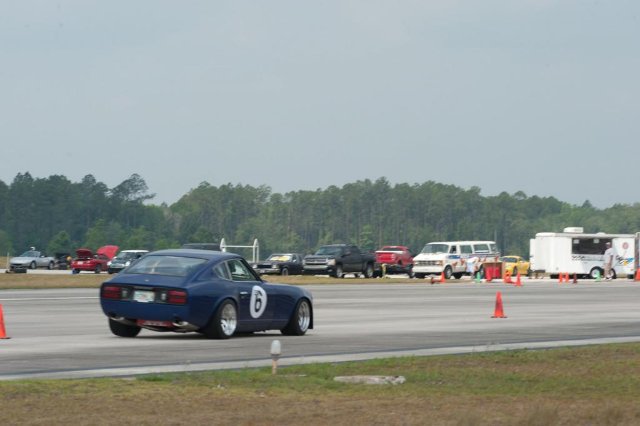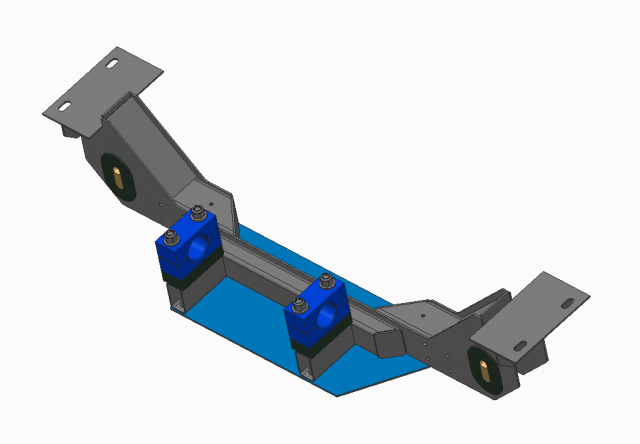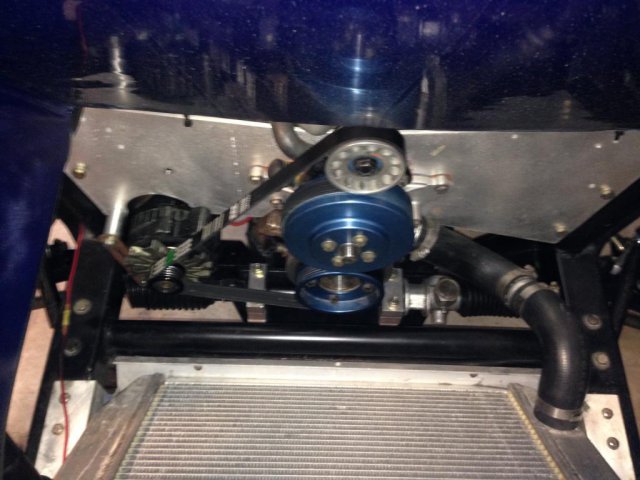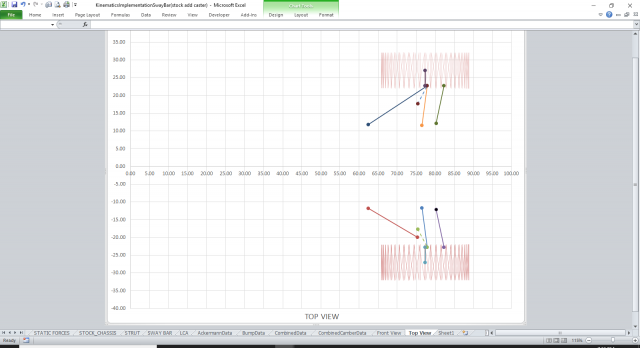-
Posts
1161 -
Joined
-
Last visited
-
Days Won
10
Content Type
Profiles
Forums
Blogs
Events
Gallery
Downloads
Store
Everything posted by 74_5.0L_Z
-
I ran 16x8 with 245/45-16 Hoosiers under the stock fenders. The Hoosiers have a cantilevered sidewall, so would be similar to running a 16x9 wheel. The key is getting the backspace / offset correct. I was running 5" backspace with coil-overs. Coil-overs are required to run that much backspace. A 16x9 wheel is 10" wide from outside to outside of the lips, so a 5" backspace is equal to zero offset. I know from experience that a 16" wheel with 5 inches of backspace clears the struts and coilovers (I am running the old GroundControl coil-overs). The rear wheels have more clearance than the front. On the front I had about 1/8" clearance, and on the rear I had about 1/2"-3/4" clearance with 16" wheels and a 5" backspace. You could run a different backspace front to rear if you wanted to push the rear wheel in further. Or, you could buy wheels that optimize the rear wheel placement and run spacers on the front. When you run the 16" wheels tucked to clear the stock fenders, the front tire will contact the frame and or Tension / Compression rod at full turn. To fix that, I made some simple limiters for the rack.
-
I have a 260Z with SubtleZ body kit and Ground Control coil-overs at all four corners. The SubtleZ kit provides an additional 1.5" of clearance between the fenders and tires compared to the stock fenders. The car currently has 15x10 wheels with a 5.25 inch backspace. On these wheels, I have run Hoosier 275/35-15 and Avon 23.0 x 10.5-15 race tires. I run no spacers on the rear and use 1/4" thick spacers on the front. I have previously ran 16x8 inch wheels with a 5 inch backspace on all four corners with no spacers and the stock body work. Clearance was perfect with 245/45/16 Hoosiers. The key is getting the backspace correct to clear the coil-overs. Then specify you width to fill the fender. For 15" wheels, the maximum backspace that you can run is 5". Any more than 5" backspace requires a spacer on the front wheels. The rear wheels can accept a little more backspace than the front generally. On my car the rear tire clears the strut by ~1/4" with 15" using a 5.25" backspace. The larger diameter wheels can run a little more back space, but then you get into making custom wheels. The pictures show the car with the Avons and the Hoosiers.
-
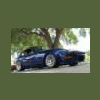
WTB 3.54 ring and pinion gears for r200 longnose
74_5.0L_Z replied to G-Tech's topic in Parts Wanted
There are a few rare Long Nose R200 differentials with 3.36 gears (I have one in mine). I believe they were stock in the 1977 280Z 2+2 four speed cars. I would love to find an even higher gear 3.15 or 3.00. -
The hood won't lift if you give the air an escape route from under the hood. All the air that goes through my radiator exits through the duct in my hood. The air inlet is sealed to the front of the radiator and the outlet is seal the back of the radiator.
-

1974 260Z 300ZXT CV Axle Conversion
74_5.0L_Z replied to Zachs260z's topic in S30 Series - 240z, 260z, 280z
There are several ways to gain some clearance. First, you can install adjustable bushing in the rear control arms and adjust them for maximum negative camber. This moves the strut outboard and gives you more clearance. The problem is that this may give you more negative camber than you want. If you have rear camber plates then you could move the top of the strut outboard as well to tweak the rear camber and gain more axle clearance. Second, you can lower the differential. The axles are shortest when they are in a straight line from the differential to the wheel. If the differential is low enough, then the stub axle at the wheel will always be above the shaft coming out of the differential. This works for low vehicles with limited strut travel, and is what I have done. I use bushings above the mustache bar to lower the rear, and adjust the angle at the R/T mount at the front of the differential. Third, in theory you could shift the differential forward or aft to gain clearance (same concept as lowering the differential). The axles would always be angled as seen from above, but the CV joints can handle that. -

steering rack issues; vq37 swap into S30
74_5.0L_Z replied to zTrollop's topic in Fabrication / Welding
It looks like you could get better angles on the steering shaft sections by rotating the pinion down toward the firewall and come in below the ear on your timing chain cover. Also, is the engine as far back and toward the passenger side as possible? -

Body harness wiring diet or aftermarket harness?
74_5.0L_Z replied to 280Z-LS3's topic in Ignition and Electrical
I used an EZ 14 circuit harness mounted on the top of the driveshaft tunnel near the firewall. Mine is strictly a race car (no radio, no Heat/AC, no windshield wipers, etc...). I use a modified ford engine wiring harness between the ECM and engine while the EZ harness supplies all of the other body functions (ignition switch, brake lights, tail lights, gauge illumination, etc..) as well as power to the ECM and fuel pump. I like the compact fuse panel and the 175 amp circuit breaker that come with the kit. It definitely made it easy to clean up the wiring. -
Where are you getting contact? Tire to fender lip or tire to strut? With 17" wheels and coil-overs, you should be able to run more than -20mm offset. That equates to 4.46" backspace I run 8" springs, but my rear spring rate is 400 lb/in (probably not street friendly). With 15" wheels, I could run 5.5 inch backspace. With 17"wheels, you could get away with 5.75" backspace. Its always better to have more backspace than you can use because you can compensate with spacers. If you don't have enough backspace then there is no way to adjust besides getting different wheels. I use 5.25 backspace on all four corners, but only use spacers (1/4") on the front.
-
What are you using the car for (street, drag strip, track days,...)? What size tire are you trying to fit? If you choose the right wheel diameter and backspace, contact of the strut tube is not the limiting factor. On the rear, if you have coil-overs, you can run at least 5" of back space with a 15" diameter wheel. I run 15 x 10 wheels with 5.25" back space. With Hoosier 275/35-15 tires I have about 1/2" clearance at the strut tube. As you increase the wheel diameter to 17 or 18", you can increase the backspace of the wheel. The inner wheel tub is the limiting factor for modern (17", 18") diameter wheels.
-
You will loose camber gain.
-
When I designed my new cross-member, I added notches to positively locate it laterally relative to the frame. The bolts don't take any shear load.
-
With the mount arranged horizontally like that, you are putting a bending moment into the side of the block. The lower bolts at the block are in tension, and the upper edge of the mounting plate is trying to push into the block. Typically, the mount is angled normal to the face of the block to assure that the mounts don't apply bending loads.
-
I haven't had issues with it, but I do want to add a locking mechanism to support lateral loads trying to separate the rack tube from the rack pinion housing. Right now the engine is out of the car, so it might be a good time to revisit. An even better solution would be a nice Woodward rack. Do you have one I can borrow😀?
-
You could try making your own cross-member like I did. The other thing that you can do is move the whole cross-member forward so that the engine drops in behind. This will also add caster and require custom T/C rods. crossmember.pdf
-

280z 1975 Steerin Rack Rebuild Question
74_5.0L_Z replied to BMAC's topic in S30 Series - 240z, 260z, 280z
https://www.classiczcars.com/forums/topic/48621-steering-rack-disassembly-and-refurb/?&page=4#comments- 1 reply
-
- 1
-

-

Drivetrain offset from centerline?
74_5.0L_Z replied to fusion's topic in S30 Series - 240z, 260z, 280z
It is offset toward the passenger side (I think the offset is about 3/4"). Duplicate that as much as possible to minimize driveshaft angle as seen from above. -
My posts in the thread above show the fitment.
-
The dimensions for the bar above were for an S30. The original installation was in a 1974 260Z.
-

Dual Ball Joint Strut Modification
74_5.0L_Z replied to JMortensen's topic in Brakes, Wheels, Suspension and Chassis
I think you would be better off creating an SLA front suspension rather than the double ball joint set-up. Alternatively, have you considered putting narrower front wheels / tire on the car and using longer lower control arms to push them out to the width of your fenders. You would of course have to relocate the top of the strut outboard by a distance similar to the added length of the lower control arms. The factory LCA is ~11.3 long center to center. You currently have 15x14 wheels with essentially a 4" backspace. I would go to a 15 x 11 with a 5.5 inch backspace and make some LCAs about 16 inches center to center. Which ever avenue you pursue, I am watching eagerly and would be willing to provide any help I am able.- 38 replies
-
- dual ball joint
- scrub radius
- (and 7 more)
-
I used the gorilla lugs for several years (black 7075 aluminum) and had no problem. I used P/N 44037B because I have replaced all of my wheel studs with M12 x 1.5 ARP. If you have stock wheel studs then you need M12 x 1.25 threads. However, when I started doing track days I bought a good set of steel lugs.
-

More Caster With Power Steering?
74_5.0L_Z replied to socorob's topic in Brakes, Wheels, Suspension and Chassis
Unfortunately, it is really hard to get more than about 5 degrees on an S30 without major modifications. I'm at about 6.5 degrees and I have moved my cross-member forward and the top of the struts backward. Yes you do get benefit from the effort. Just know that there is a lot involved in getting it right. This is what 6.5 degrees looks like in side view. -

More Caster With Power Steering?
74_5.0L_Z replied to socorob's topic in Brakes, Wheels, Suspension and Chassis
For a street driven car, I would say dial in as much caster as possible without having clearance or binding problems. Unfortunately, adding caster is difficult to do correctly. If you add caster by lengthening the T/C rod then you have to have spherical bearings at the LCA to cross-member connection to avoid binding. You have to push the lower ball joint forward 1.25 " to get 6.4 degrees of caster. Because the LCA attachment to the cross-member is fixed, the LCA becomes angled forward pretty significantly as seen from above (See attached image). I used to set the car up with the control arms angled forward, but that causes other issues. The angled LCA causes loss of static camber. With camber plates you can compensate, but that is a band-aid. Another issue to deal with when you angle the arm forward is clearance between the tire and frame and tire and forward section of fender. Again, things that can be dealt with but have to be considered. In my current set-up, I moved the top of the strut back 3/4", lengthened the T/C rod to move the lower ball joint forward ~.5 inches, and made a cross-member that relocates the LCA attach point forward so that the LCA is perpendicular to the chassis center line at my desired caster. -

More Caster With Power Steering?
74_5.0L_Z replied to socorob's topic in Brakes, Wheels, Suspension and Chassis
I think there are a lot of variables. The factory ALWAYS designs cars to understeer at the limit. That means that they always want the front suspension to reach its traction limit before the rear. Many newer sports cars have an SLA front suspension and a strut rear suspension, or they have struts at all four corners with tons of front caster. The SLA will almost always have more camber gain than a strut set-up, so the designers may be adding rear camber so that the rear will be optimized relative to the front at the lateral limit. Likewise, the newer front strut designs utilize a ton of caster compared to older designs. The added caster adds camber gain to the front wheels as steering angle is applied. So again, the rear needs added camber to match the front when both ends are near their limit of traction. The S30 is different than the newer designs (at least in stock form). The rear struts have more camber gain than the front (the fronts have about .5 degrees per inch of travel, and the rear have about 0.75 degrees per in of travel). You can see this on a lowered Z with stock suspension: The rear gains a lot of negative camber, but the front gains very little. Also, the stock front caster is really low compared to newer designs (<3 degrees), so there is no camber gain as the wheel is turned. If you add significant caster to the front of an S30 (>6 degrees), then you get the benefits of camber gain as the wheel is turned. You can then run less static camber, and you can run almost equal camber front and rear. I run 6.5 degrees caster and -1.8 degrees camber up front. I run -1.5 degrees camber in the rear.


